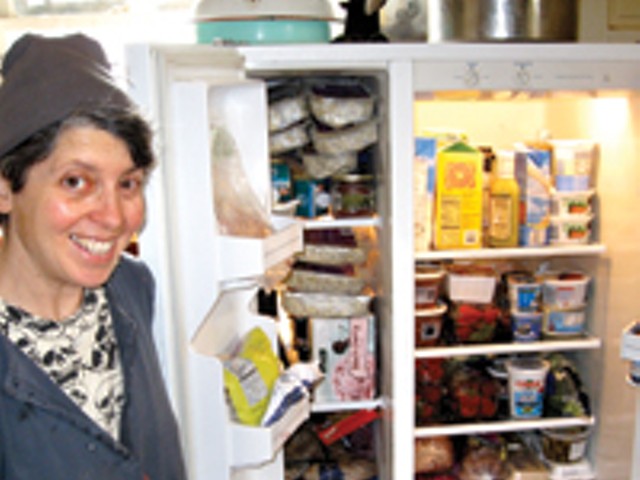Who am I? Where do I come from? Where do I belong? These three questions are the focus of the current exhibition at the Oakland University Art Gallery.
Revolutionizing Cultural Identity: Photography and the Changing Face of Immigration features photo-based works by 11 artists who reside in the United States and Canada. As much as the exhibition challenges the meaning of ethnicity, individuality and perception, it reminds us that underneath it all, we're all in the ongoing process of creating and claiming identities for ourselves. And only that process has the potential to truly define us.
Several of the works, such as a short series of self-portraits by OU student Chandana Reddy, approach the exhibition's key questions through self-examination. In her photo triptych "Study: (Cultural) Identity," Reddy appears in a T-shirt and jeans, nude and in traditional Indian clothing. The stripped-down self in the center marks the duality of the two dressed and adorned selves on each side.
Toronto-based artist Sara Angelucci discovered her father's wallet in a box of family memorabilia. Although it was 10 years after his death, the wallet was still intact, just as he'd carried it. As she examined the contents, she found they told the story of his life as a father, husband, laborer and an Italian immigrant. She created a wall-mounted art installation of images of photos, cards, notes and ephemera that included her father's Steel Workers of America union card and a prescription for heart medication. She then wondered what her own wallet might reveal about her. So she added images that showed her university alumni card and membership passes for galleries and museums. In indirect ways, the installation of 98 photos tells the story of a father-daughter relationship. As much as it highlights a generational shift in immigrants' experience, Angelucci's work asks us to consider how education, professional occupation and personal affiliations define us within the framework of our ethnicity and completely outside of it.
Some of the other artists explore cultural identity by turning outward and seeking to understand the experiences and thoughts of people around them. University of California professor Kip Fulbeck sets the stage for each of his photo subjects to describe themselves in their own words, as they respond to the question, "What are you?"
One of the photos from Fulbeck's "The Hapa Project" shows a bare-shouldered young woman against a white background. The caption below her image reads: "My last boyfriend told me he liked me because of my race. So I dumped him." Beneath that it says: "Chinese, Scottish." There are 30 of Fulbeck's digital chromogenic prints on exhibit. The simple format — portraits taken "without the extraneous identifiers of clothing, jewelry, glasses, or makeup" — brings the urgent self-defining expression of each individual into focus. The viewer cannot get around the stark honesty of these faces or the pointed candor of their words. Fulbeck's portraits give authority back to the subjects. They become mirrors where we may ask ourselves who we are and how we know.
Rafael Goldchain, a widely exhibited photographer who lives in Ontario, manages to combine the autobiographical and outside observer approach in his black-and-white photo series, "Familial Ground." In his self-portraits, Goldchain wears theater-quality wigs, makeup and costumes, not to impersonate but to transform himself into his ancestors. He appears in a fur coat and dress hat as Pola Baumfeld, then in a boat captain's wool cap and full beard as Mojszes Precelman. Whether he is portraying the young, the old, male or female, Goldchain's images are careful and convincing meditations on ancestry, mourning and resemblance. Like looking at a photo of a great-grandparent who has our eyes or our same smile, but wears Victorian clothing, these portraits bring us closer to our lineage, making us feel like we belong. At the same time, they evoke an unsettling sense of disassociation.
Perhaps the most striking and immediate perspective in the group is that of University of Rhode Island professor Annu Palakunnathu Matthew. Three large prints from the "Virtual Immigrant" series depict call-center workers in India, people who study American culture and adopt American accents to work as telephone representatives for U.S. companies. The "virtual immigrants" become Americanized without ever leaving their own country. Matthew's work points to a fluidity and constant flux of identity, from white-collared Western office attire to traditional Indian dress, as his photo subjects respond to a corporate-colonial experience. If Matthew's work does evoke a question, it isn't "Who am I?" but rather, "Who must I become?"
Revolutionizing Cultural Identity: Photography and the Changing Face of Immigration runs through April 13, at the Oakland University Art Gallery, 208 Wilson Hall, Rochester; 248-370-3005.
Norene Cashen is a freelance writer and poet. Send comments to [email protected]




